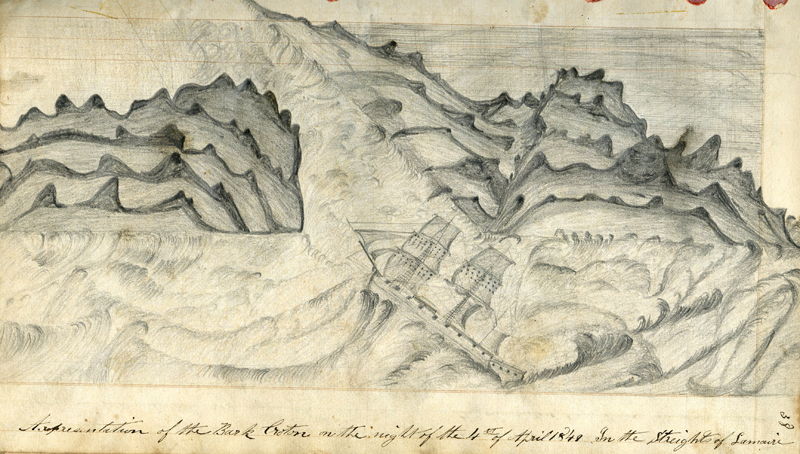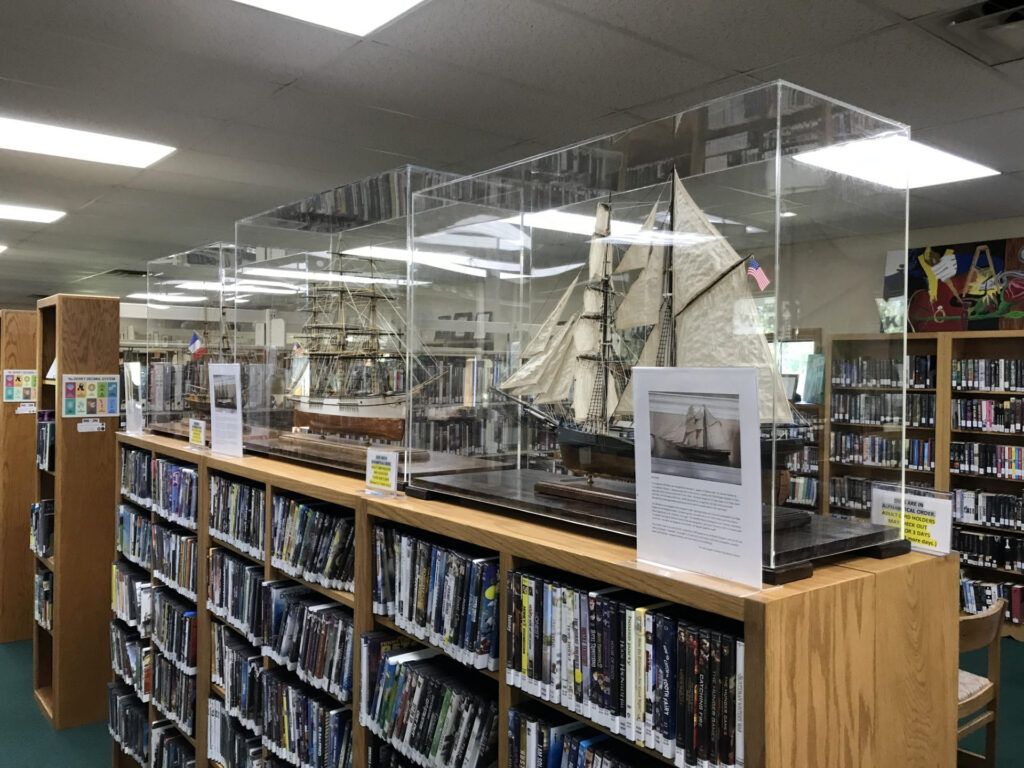Storms play an important part this week, from the nearly-always-stormy Cape Horn, in 1840, to the sinking of a Newfoundlander sealing ship in 1915.
March 30: In 1881, SS Aberdeen (Wikipedia, ShipIndex) sailed on her first voyage, from London to Melbourne, via Cape Town, then to Shanghai, and back to London via the Suez Canal. Aberdeen was special because it was the first ship to be successfully powered by a triple expansion steam engine, a major improvement on the two-cylinder compound engines. In 1906 Aberdeen was sold to the Ottoman government and renamed Halep, then was sunk by a British submarine in World War I, while serving as a Turkish troopship.
March 31: A storm off the coast of Newfoundland in 1914 caused the sinking of the SS Southern Cross (Wikipedia, ShipIndex). Southern Cross was launched in 1896 and served with the Southern Cross Expedition to Antarctica in 1898 to 1900, and was the first expedition to spend the winter on the Antarctic mainland. After that voyage, Southern Cross served in sealing hunts from 1901 until its loss with all hands in 1914.
April 1: The Battle of Okinawa began in 1945, as the end of World War II approached. USS West Virginia (Wikipedia, ShipIndex) had been bombed and seriously damaged during the attack on Pearl Harbor in 1941. Navy mess attendant Doris Miller was on board West Virginia at the time; he was sent to man an anti-aircraft gun despite having no training, and eventually was awarded a Navy Cross for his actions. In 1945, at the start of the Battle of Okinawa, West Virginia sat just off the island for several days, supporting the invasion through ground bombardment and illuminating the invasion space. One kamikaze aircraft managed to evade West Virginia’s defences and crash into the ship, causing the deaths of four sailors.
April 3: Sailing to San Francisco around Cape Horn in 1849, on board Croton (ShipIndex), Hiram Chittenden drew a picture of the landscapes he saw in Le Maire Strait, at the eastern edge of Cape Horn. The San Francisco Maritime National Historic Park has an image of this drawing, plus some description of it, in a blog post from 2012. As a born- and bred-Seattleite, I of course recognize the name of Hiram Chittenden – as you might, if you’ve ever visited the Ballard Locks, more accurately known as the Hiram M. Chittenden Locks, reflecting his important work in Seattle for the Army Corps of Engineers from 1906 to 1908.

April 4: In 1865, President Lincoln visited Richmond, Virginia, aboard a converted sidewheel steamship, USS Malvern (Wikipedia, ShipIndex), after Richmond was taken by Union troops. Malvern served as a Confederate blockade runner under the name William G. Hewes, then Ella and Annie. As Ella and Annie, the ship was captured by USS Niphon in 1863, was renamed Malvern, and added to the Union Navy. After the end of the Civil War, Malvern ended up back with its original owner, and original name, William G. Hewes.
For more about these ships, check out ShipIndex.org. And let us know if you have events that you think we should include!

